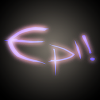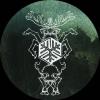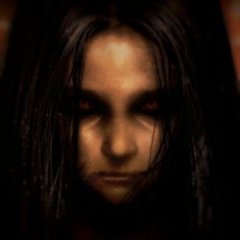For me it really depends on the project. A lot of the time I bank on themes and plots because I'm a details guy and most my inspiration comes out of those two. I generally invest most my time into the art aspect (as good art is rather time consuming) but gameplay is equally important to me. I'm extremely abstract in terms of my construction methods as sometimes I start working on some quick art pieces to anchor my themes in the level with. I also like to light things (at least with basic coverage) very early, as I tend to use that a lot for highlighting objectives and important areas. I try and pick out as much as I can with mood and pacing as early as I can as well. If I nail down exactly what I know is going to take part in the space I'm creating, I can leverage the rest of the development around that understanding. At this point I've done enough to know roughly what I'm expecting to do or see in my level, so if I'm not sure I don't work right away. This is a really big deal as a lot of people push themselves to work just because they have the time to do it. It's bad when you're unsure of your whole direction, as that often leads to redoing things later when you better realize the project. This isn't to say I don't take notes, or block out layouts. Here's a bit behind how my workflow for the current Castle Lab demo I'm working on... I had most the story to the setting scripted out in my head, but the basic jist of it is that you gotta steal a special device from a mad scientist. You're breaking into an underground lab through a vent shaft. This leads into the lab, and after stealing the device, you have to escape through a old access tower. It's a run down and unused part of the castle, so it's a maze of floors to cover. What's worse is Hadrian (the scientist) is onto your stealing of the device. Now what that boils down to is that the stair case surrounds a chain lift (elevator) suspended in the middle of the shaft. Hadrian in a fit of rage activates his robotic monstrosity (which was currently on standby on the central lift). Now with this behemoth slowly rising through the central shaft, you have to beat the mechanical monster to the top. The lift is slow and churning, but you've got a lot of stairs and obstacles to cover. So the latter end of this mission/demo is about the tension and practicality behind a narrow escape. That being said I still didn't have a clear idea what was needed to make this interesting. So I blocked out a stair case to start with... All this did though was let me know just how boring stairs get ascending ten flights to the top. Sooo I cut it down to seven total (which was far better than ten). But I had to mess around in my blockout version to get an idea for it all. Quite a good deal later (in the above shot). But having much more rounded/organic structural details aided the project as a whole. Then I realized I needed additional details per floor to break it up even more. So then I created a list of what needed to be done (so that I didn't lose track or forget!). Each number signifying an individual floor. "1: Intro and a lotta dirt (maybe cob webs?). 2: Continued dirt and then some barrels.3: Storage with lots more barrels.4: Wall shackles, maybe storage slots for bodies in the walls?5: Blown out ceiling from the floor above. Tunnel through the storage recesses.6: Blocked passage is resolved by a very small cat walk outside the windows (windows must be busted out for this!).7: There's a hole in the center of the floor with some makeshift bridge across it. The ending picklock scene is also here at the end." Short and to the point, but it covers most the major details I needed to keep track of. Right now I'm actually tackling the first floor and tearing out walls to put in a lot of dirt and debris. So it's not done yet but that's just a bit of insight on my current work I'm doing. But even still I've really not been hammering away with this near as much. Working on side projects with other TDM authors on their own work to break things up a bit. For a while I just had to set it aside after just slamming out the highres to lowres mesh work nonstop for three days. I'm career minded about all the game work but I have no team yet. When on your own, you've gotta find a stride that works for you. For me I know for certain I make super bland art when I'm feeling either uninspired, or just plain simply tired and wanting to unwind after a long week. We all have lives outside of TDM (most of us anyway ) but sometimes you really just don't want to build things on your days off. I had about two weeks of just brain mush moments, and just simply wanting to relax on my days off. And that's okay, because when I come back I just pick up at a suitable point and continue. Running yourself into the ground is the worst idea. If you're career minded like me, you may ask yourself, "how am I supposed to do this all the time like the pros?" But you have to realize most those devs aren't working a grocery job on the side (the games are their job). So it's easier to get burned out when you simply just don't ever seem to get a break. When you're working on games exclusively as your full-time job it's totally a different kind of scenario. You're not having to put in the hours when you get home, because you already did that at the office. So it's not my own excuse but my reasoning as to why I have to take purposeful timeouts. When you feel rested and are both mentally and physically able to handle both, then it's great. But you have to make room for the human factor, and not beat yourself up over it (so otherwise not being Epi) So there's my two cents.






 !
!





